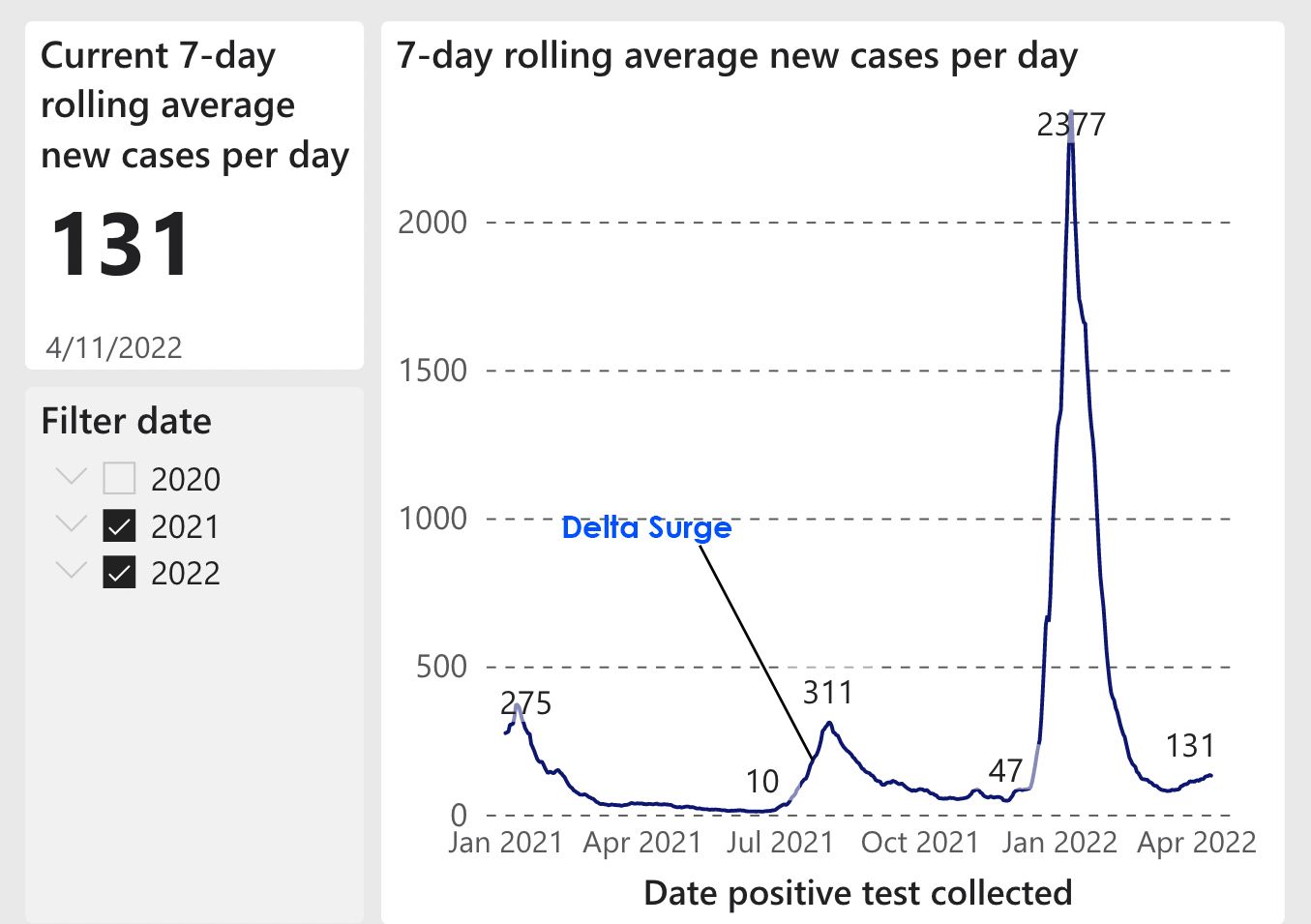The official daily case count probably isn't reliable, but other metrics suggest that San Francisco is probably in the midst of its BA.2 surge, which experts predicted would likely not be as significant as this past winter's first Omicron surge.
The BA.2 subvariant is a sibling of Omicron, and people who already had Omicron are likely fairly immune to this subvariant. But like highly contagious variants before it — and this one is allegedly 30% to 80% more transmissible than the already highly transmissible Omicron — it's causing havoc and big outbreaks, most notably now in Europe, but also along the Eastern Seaboard of the U.S. A big uptick in officially recorded cases caused the city of Philadelphia to reinstate its mask mandate Monday for schools, restaurants and other businesses, and government buildings.
Will the same thing happen here? It's hard to say. Our weather is a lot better than the East Coast's lately so people are spending more social time outside. But even if the majority of people are testing at home and not having their cases go into the official PCR count in San Francisco, the official numbers are showing signs of a new surge that is approaching the level of the early Delta surge.

As you can see, the angle of the uptick isn't showing the steep rise in cases we saw in late December and early January, but it is a noticeable rise — and this is based on data that is already a week old.
UCSF infectious disease specialist Dr. Peter Chin-Hong tells the Chronicle today that, given that we know these official daily counts aren't reliable, and given everything he's hearing anecdotally, he's inclined to say that yes, we are in the BA.2 surge now. And that assumption is backed up by rising test-positivity in San Francisco, which when combined with less overall PCR testing indicates greater uncertainty in the official case numbers.
"There’s been so many people getting COVID [lately]," Chin-Hong said. "The amount of people and outbreaks I've been hearing about are not in sync with the official numbers."
If you just doubled the official number of new cases for the last published day for the SF Department of Public Health's data, April 14 (179 cases), we'd be well above the Delta peak of last August, which saw an official peak of 311 cases in one day (itself a likely undercount, as home-testing kits were widely available then). So yes, this is probably the surge, and it may not have peaked yet. At 4.6%, test-positivity is well on its way to reaching or exceeding what we saw in the Delta wave, too.

Still, San Francisco is highly unlikely to impose any new mask mandates or restrictions, and the official word from BART and the TSA at this point is that wearing a mask is recommended, but not required. As of Monday, Uber, Lyft, and many airlines and public transit agencies across the country declared an end to mandatory masking after a federal judge's controversial ruling, but SF Muni buses and trains are still requiring masks, for now.
So, much like it's been since the fall, it's enter-at-your-own-risk when it comes to crowded spaces where no one is masked.
Chin-Hong cautions that some of these metrics could be misleading, like the test-positivity rate. As he tells the Chronicle, "The lowest-hanging fruit are going in to get [official PCR tests right now]. Whereas in the old days, [when] people were afraid of COVID and nobody could get home tests ... a more representative population might get officially tested."
And, Chin-Hong suggests, a higher number of people than before could be simply getting confirmational PCR tests after already testing positive at home, which is driving up the test-positivity percentage.
Hospitalizations remain relatively flat across the Bay Area and California, leveling out around where they were prior to the Omicron surge — but that may not hold if unvaccinated or vulnerable populations find themselves more in risky situations during this wave. Hospitalizations in San Francisco hit a five-month low in early April, with just 30 people hospitalized with or for COVID, and that number has ticked up 33% to 40 as of Monday.
Still, deaths both statewide and nationally have slowed considerably, even as the nation closes in on the one-million mark for pandemic deaths.

